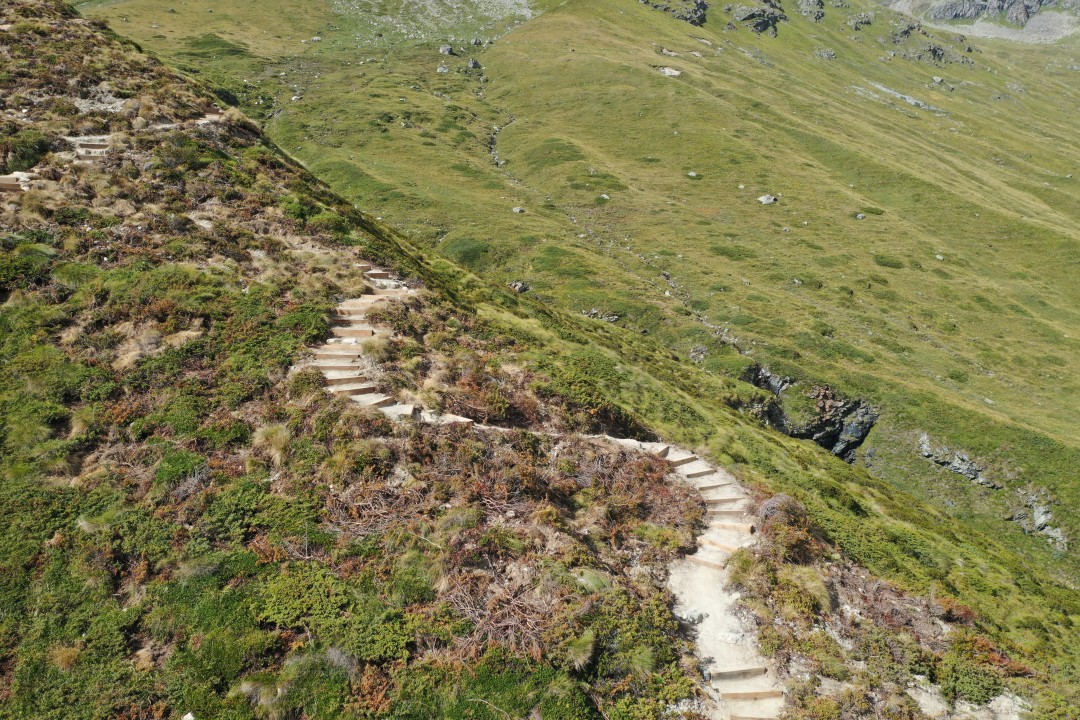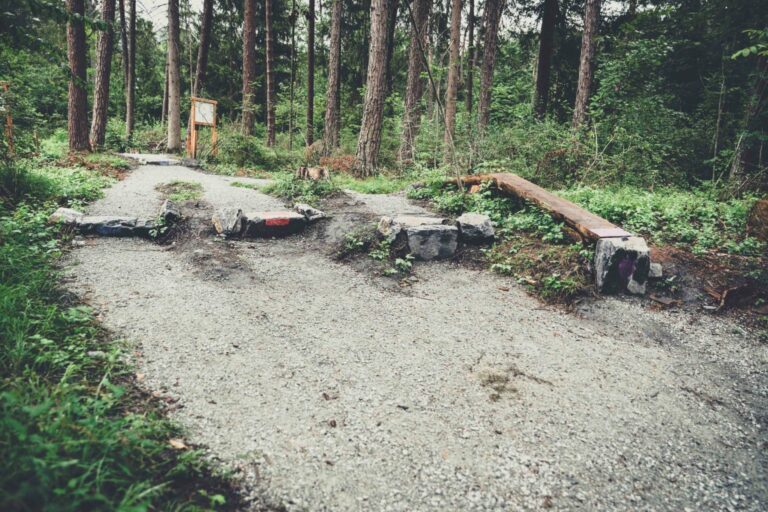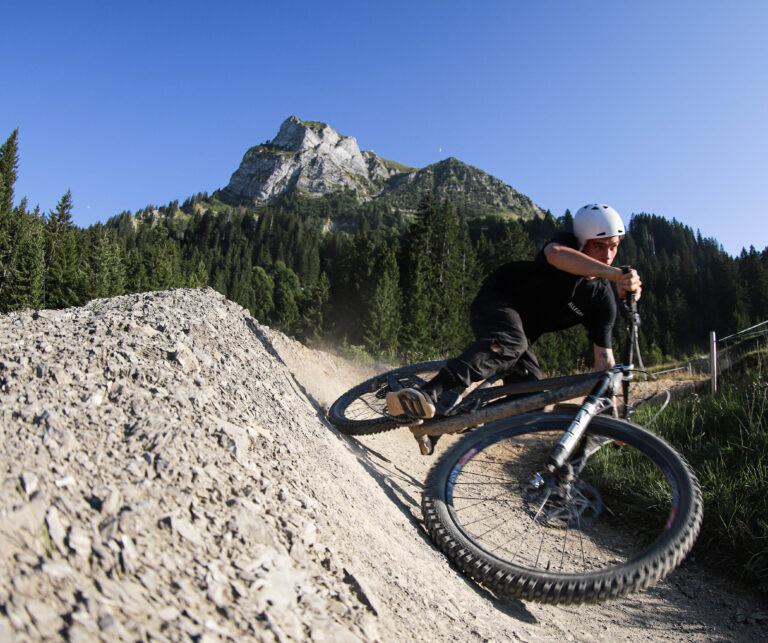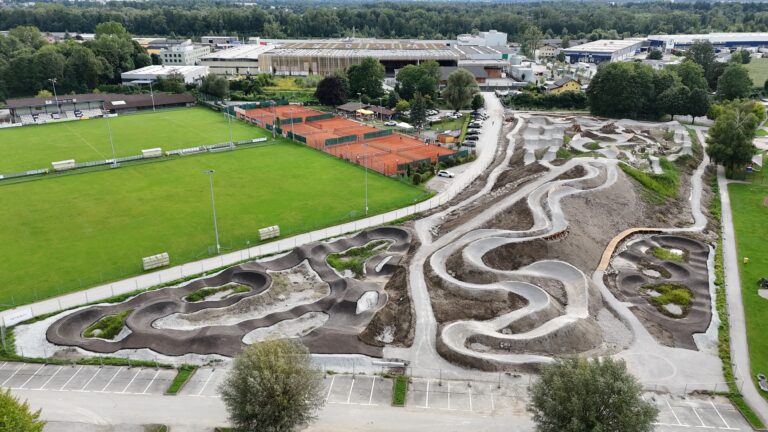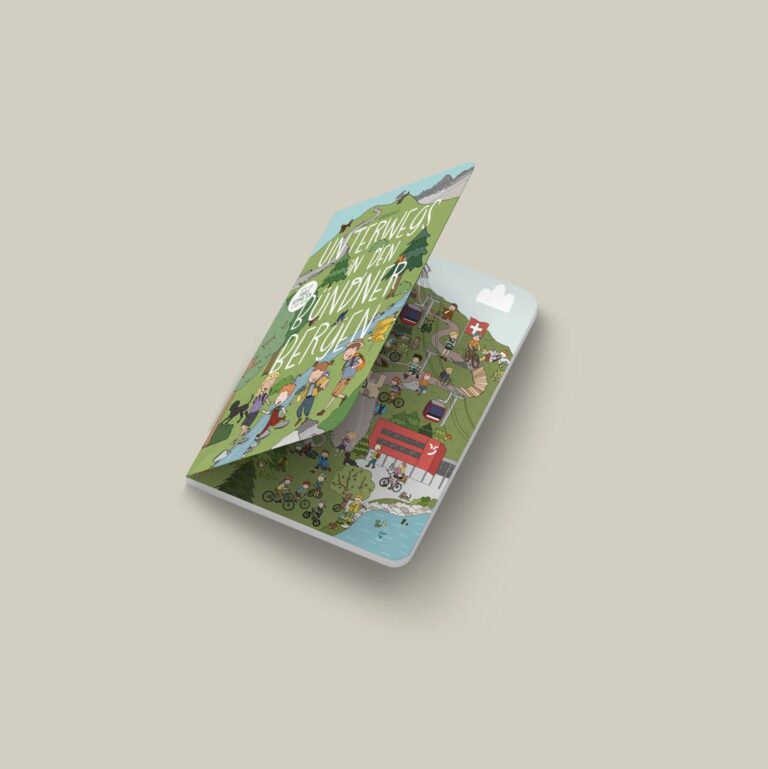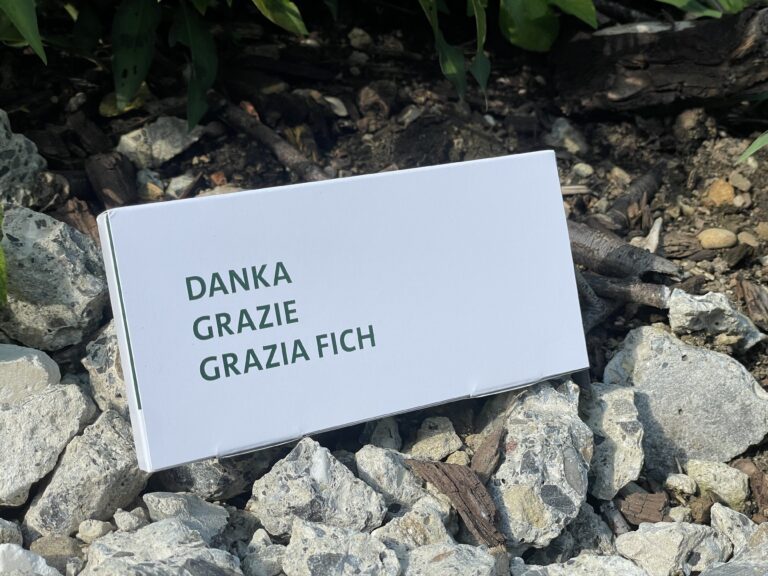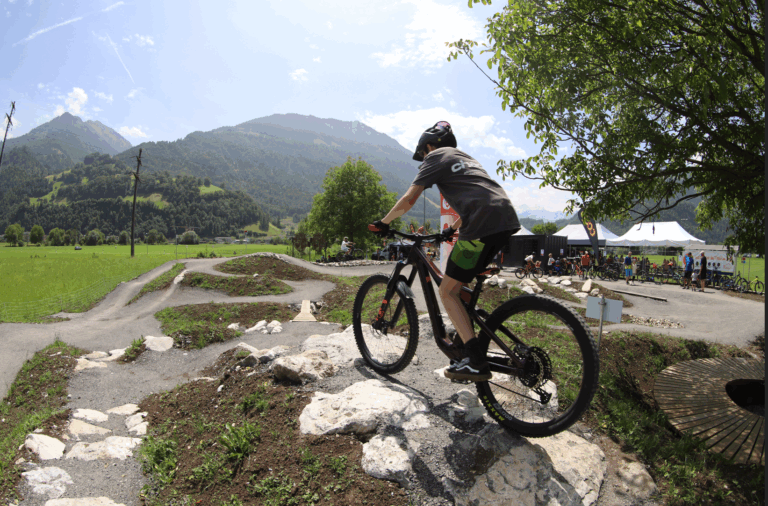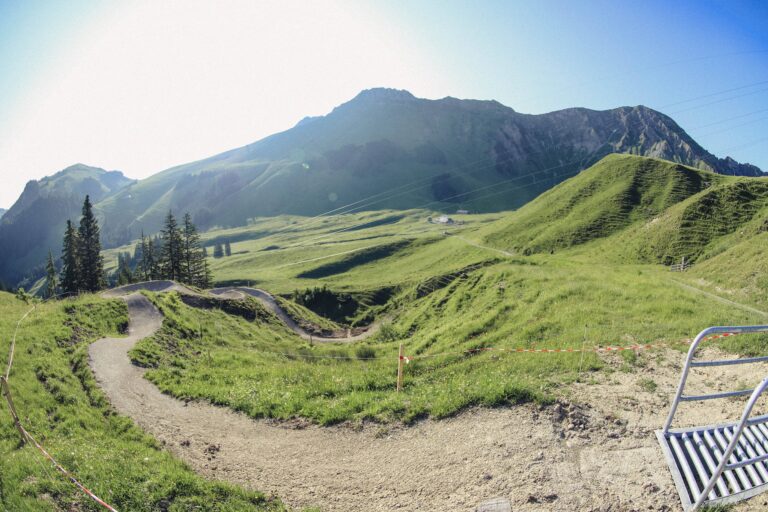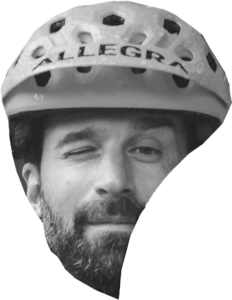Steps and stairs: indispensable elements in path construction
The decision for or against steps on trails depends largely on the respective user group. While steps on hiking trails are a solid solution for reducing and controlling erosion, they are less popular on mountain bike trails. From the user's point of view, it is more pleasant on mountain bike trails to reinforce areas at risk of erosion without building steps, but rather by means of stone reinforcement. Building steps to reduce erosion is particularly useful when maintaining hiking trails. For completely new hiking trails, the route should be planned in such a way that steps can be avoided as far as possible, depending on the available corridor.
The importance of steps in road construction
Steps and stairs are more than just functional elements; they play a critical role in erosion control and the long-term maintenance of trails. On steep and/or eroding trail sections, they prevent soil loss, enable clear routing and provide safe and durable paths for all users.
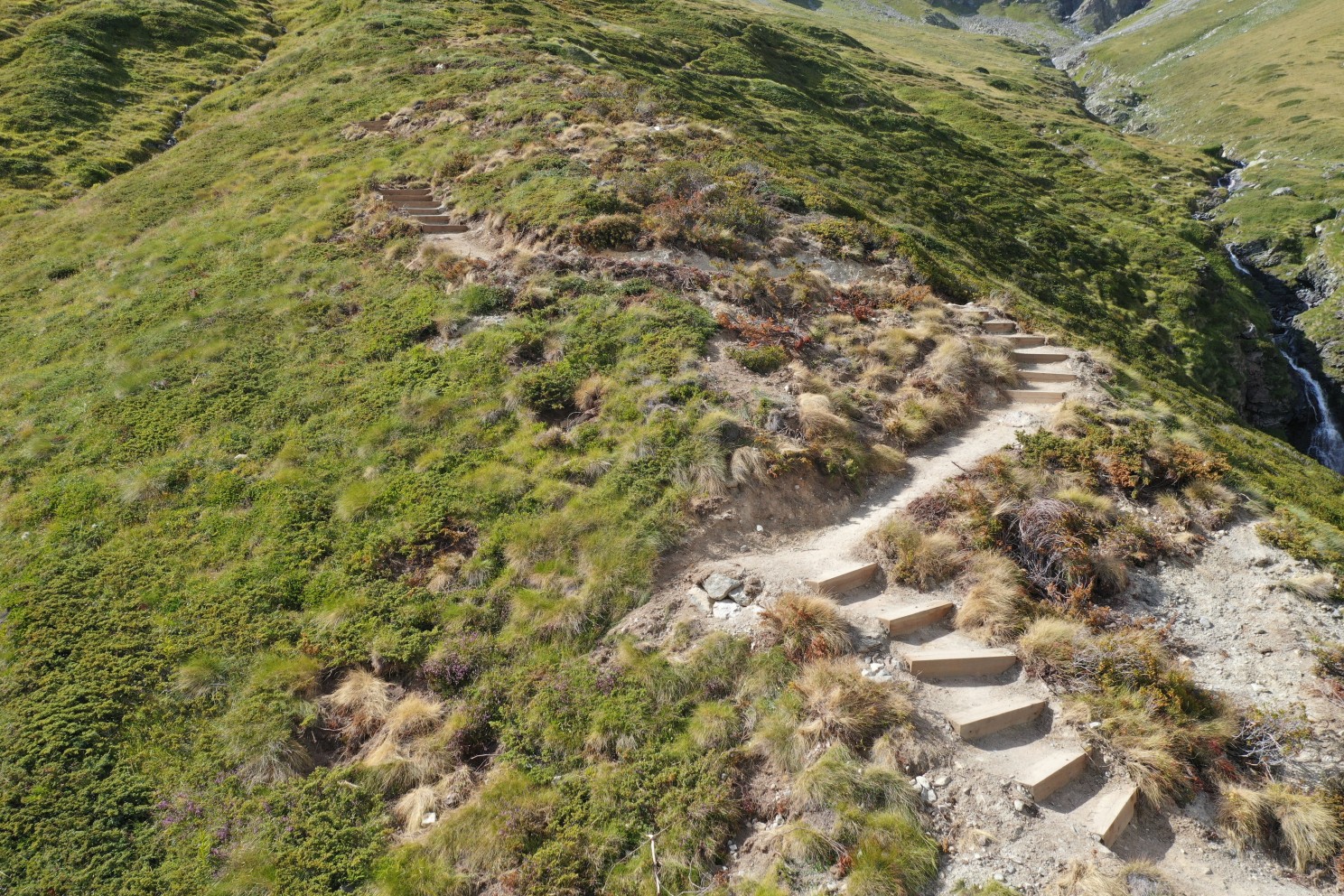
Selection of material: a key question
The decision between wood and stone for building steps depends on several factors: How many steps are needed? Are enough stones available near the path? Can stones be easily transported to the construction site? Is durable wood available locally?
In general, stone is preferable to wood if it is locally available in sufficient quantities. Stone steps are the most durable solution when installed correctly, as they have no expiration date. Wooden steps will need to be replaced sooner or later, depending on the type of wood. When building new wooden steps, it is recommended to use durable types of wood such as larch, which offers good durability at a reasonable price. Other types of wood can also be durable. The source should always be as local as possible.
Sometimes steps can be made from a combination of stone and wood, especially in rough terrain where there is not enough stone available and no supply is possible via the existing trail network. In this case, the use of a helicopter can be useful. Transporting wood by helicopter is more cost-effective than transporting stone. However, for the reinforcement of heavily used mountain bike trails, it can still be useful to bring in stone. Although this may seem expensive at first, depending on the situation, it can control erosion and ensure the long-term preservation of the trail. After the one-time investment, the ongoing maintenance costs for this area are minimized in the long term.
If you need support in maintaining hiking and biking trails, we are happy to share our experience and provide non-binding advice. Contact us by email if necessary: lukas@helloallegra.com
